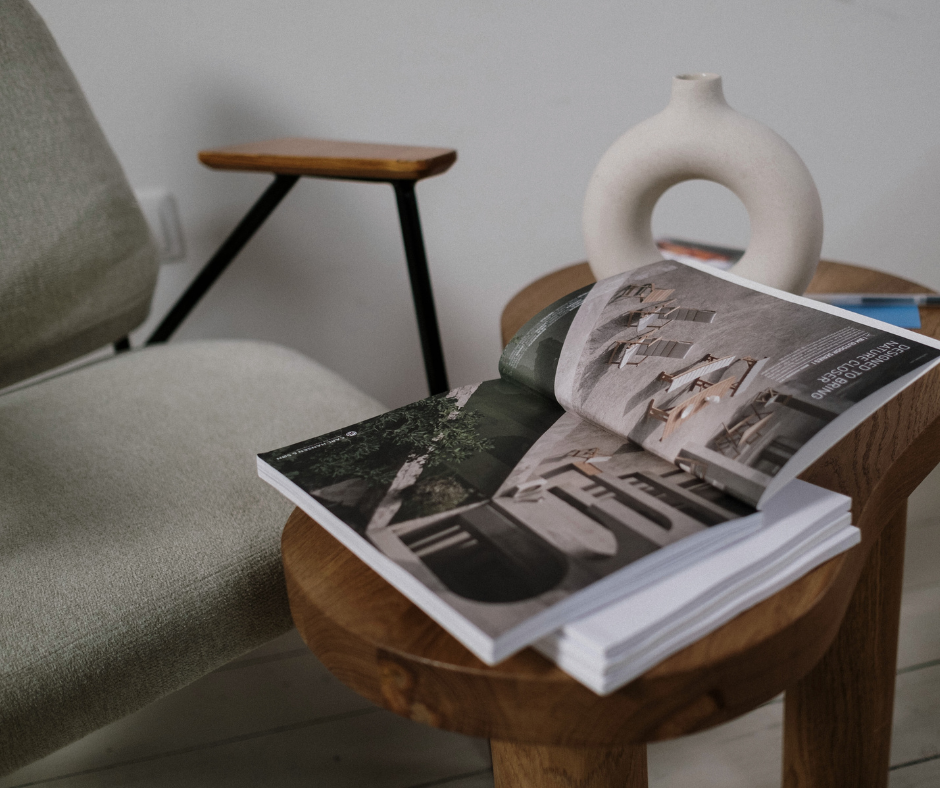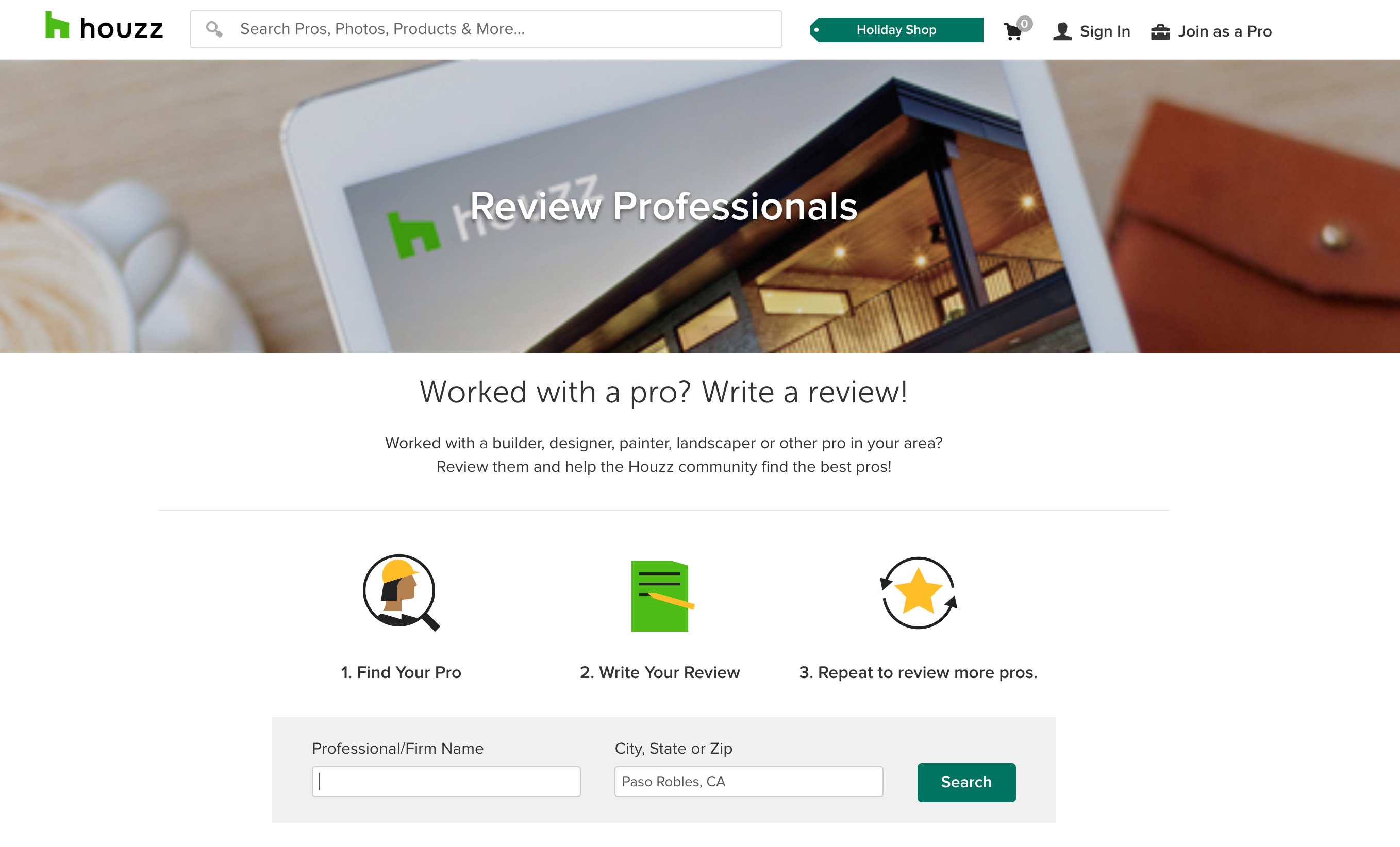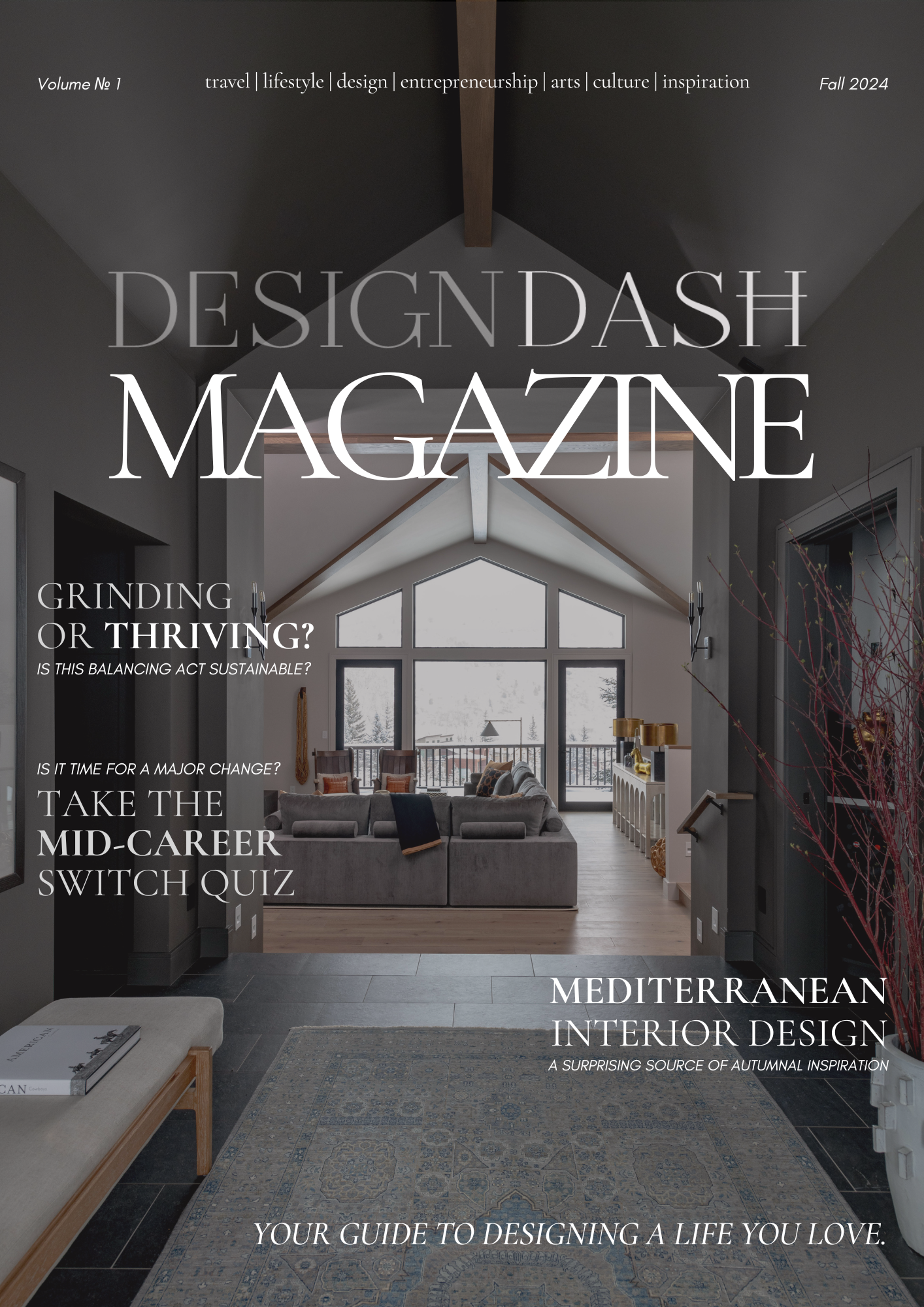

DesignDash Guide: How to Use Social Proof to Strengthen Your Brand
Summary
Social proof is a powerful tool for interior designers and artists to build trust and amplify their brand. By showcasing testimonials, before-and-after photos, user-generated content, and influencer collaborations, you can let your satisfied clients do the talking and attract more potential customers. Start leveraging social proof today by gathering feedback, encouraging clients to share their experiences, and incorporating it into your website, social media, and marketing strategy.
Reflection Questions
- How have my past clients or collectors shared their experiences with my work, and how can I use those stories to build trust with future clients?
- Which types of social proof (testimonials, user-generated content, influencer endorsements) best suit my brand, and how can I incorporate them into my marketing strategy?
- How can I make it easier for my existing clients to share their feedback or promote my work through social media and word-of-mouth?
Journal Prompt
Reflect on a recent project or sale where a client was particularly satisfied with your work. How did their positive experience impact your confidence as a creative entrepreneur? What specific steps can you take to encourage more clients to share their feedback and showcase your work?
Whether you’re designing stunning interiors or crafting stunning ceramics, building trust with your audience is key to growing your brand. Why not let happy clients do some of the heavy lifting for you? Social proof can help you amplify your work and make potential clients feel more confident in choosing you.
From glowing testimonials to user-generated content and before-and-after transformations, social proof shows people that others have already trusted and loved your work, which makes it easier for them to do the same. The best part is that you already have a lot of social proof content (and access) that you might not be leveraging. Here’s how to make the most of it!
What is Social Proof? (And Why Does it Matter for Creatives?)


Social proof is a psychological phenomenon where people tend to copy the actions of others to determine correct behavior in a given situation. It’s something we all do, often without realizing it. Whether you’re a creative entrepreneur, interior designer, or artist, this concept plays a key role in how people perceive your brand.
Imagine this: you’re considering trying out a new restaurant, but you’re unsure if it’s good. Then you see glowing online reviews or hear a friend rave about their experience, and suddenly you feel confident giving it a try. That’s social proof in action—it’s the influence of others that guides your decisions.
For your business, social proof could be as simple as a satisfied customer posting a photo of their newly designed living room or a gallery collector sharing their excitement about your latest art piece on Instagram.
Social Proof vs Social Influence


“Informational social influence” is a psychological concept where people conform to the actions or opinions of others because they believe those others possess more accurate information or knowledge, especially in situations where they feel uncertain. Essentially, when we’re unsure about what the correct behavior or decision is, we look to others—particularly those we think are well-informed or experts—to guide us. This happens a lot in creative industries like interior design and art, where clients may not be experts themselves and rely on the recommendations, reviews, or opinions of others to inform their choices.
For example, if someone is unsure about which interior designer to hire, they might read online reviews or see that many people have worked with a particular designer and had great experiences. Because they perceive these other people as having more knowledge or experience in choosing a designer, they may be influenced to hire that same designer. This is how informational social influence works—it’s about making decisions based on the belief that others know something you don’t.
Social proof, on the other hand, is more specific and refers to a marketing concept where people copy the actions of others because they assume that those actions reflect correct behavior or the best choice.
Why Social Proof Matters for Interior Designers and Artists


In creative fields like interior design and art, trust and credibility are everything. Your work is deeply personal and visual, meaning your clients or buyers often need to “see it to believe it.”
Potential clients or collectors rely heavily on real-world feedback—whether that’s testimonials from others who’ve worked with you, before-and-after photos of your design projects, or a portfolio that showcases your best pieces. This type of social proof helps them feel secure in their decision to hire you or invest in your art.
Since design and art can sometimes feel like subjective fields, having tangible social proof gives your brand the credibility it needs. People might not understand every design choice you make, but if they see that others trust your expertise and love your work, they’re far more likely to do the same. Social proof works because it reduces uncertainty, especially in industries that rely so much on visual and emotional impact.
Top Tip
A referral from a happy customer or client is one of the most powerful forms of social proof you can leverage. Not only does it build trust, but it also makes your potential customers feel more comfortable choosing you over someone else.
Social Proof Types You Can Use to Strengthen Your Brand


When it comes to building trust with your audience, leveraging different types of social proof is a powerful strategy. Each type works by showing that others already trust, appreciate, or value your work. Let’s explore the key types of social proof that can help elevate your brand as an interior designer or artist.
Expert Social Proof
Expert social proof involves endorsements or recognition from industry experts, influencers, or leaders in your field. When a respected figure in interior design or art praises your work, it validates your skills and boosts your credibility.
Robert Cialdini, an expert in social psychology, identifies this as one of the most influential forms of social proof. For example, being featured in a well-known design publication or getting a shoutout from a respected art curator can position you as a trusted expert in your niche.
Celebrity Social Proof
When celebrities endorse your product or service, it’s a form of celebrity social proof. While this might sound like something reserved for big brands, in reality, it’s about collaborating with influencers or figures who resonate with your target audience.
An endorsement from a popular design blogger, a well-known art collector, or an influencer in your creative space can increase your brand’s visibility and attract new customers. Authenticity is key—look for partners who genuinely align with your brand values.
User Social Proof


User social proof is one of the most relatable and effective ways to build trust. It comes directly from your current or past clients through testimonials, online reviews, or even user-generated content. People tend to trust real customers more than marketing materials because their experiences feel authentic and genuine.
For example, when a client posts photos of their newly designed living room on Instagram or leaves a glowing review on a review site, it acts as powerful social proof that can encourage others to work with you.
Crowd Social Proof
Crowd social proof refers to the influence created when large groups of people are seen to be engaging with or using your product or service. This could be shown through large numbers of social media followers, lots of positive reviews, or even impressive share counts on your blog posts.
When potential clients see that many others have already trusted your brand, they’re more likely to feel confident in doing the same. It’s the idea that if everyone else loves your work, they will too!
Friends & Family Social Proof
Recommendations from friends and family can be some of the most persuasive forms of social proof. When someone’s close friend or family member recommends your interior design services or artwork, it creates immediate trust.
After all, we tend to trust the opinions of those we know personally more than anyone else. This type of social proof often happens naturally through word-of-mouth and personal referrals, so make sure you’re nurturing client relationships and encouraging them to spread the word.
Certification & Awards


Having certifications or awards from authoritative bodies in your industry also counts as social proof. These accolades provide a professional endorsement of your skills and qualifications, helping potential clients feel confident in choosing you.
Whether you’ve won a design award, been recognized in a prestigious gallery, or received an industry certification, showcasing these achievements boosts your credibility and reassures clients of your expertise.
5 Ways to Use Social Proof to Grow Your Creative Brand
From influencer marketing to user-generated content, below are just a few examples of how you can use social proof to grow your brand.
#1 Client Testimonials


First on our list of social proof strategies is asking for client testimonials. Client testimonials are a great form of social proof because they’re direct endorsements from people who’ve already experienced your work. The easiest way to ask for a testimonial is to make it part of your project wrap-up or follow-up process—just like you’d send a thank-you note.
Be genuine when you ask, and let your clients know how much their kind words would mean for future projects. Highlight their experiences and how your design or artwork made a difference. A well-crafted testimonial should showcase not just your creativity, but also your professionalism, attention to detail, and ability to bring your client’s vision to life.
Top Tip
Encourage clients to write testimonials that reflect the whole process, from their initial ideas to how you delivered a final product or service that exceeded their expectations.
#2 Before-and-After Shots & Portfolio Reviews
Before-and-after visuals are one of the most compelling types of social proof for interior designers. They visually communicate the transformation and impact of your work in a way words alone cannot.
For artists, portfolio reviews or comparisons between an initial concept sketch and the final painting can provide similar value. These images are powerful because they show your audience what’s possible when they work with you. Featuring these visuals on your website, social media platforms, and digital marketing materials is essential to engage your audience.
Top Tip
Use high-quality before-and-after photos to create a visual story that shows the problem-solving aspect of your design process or the evolution of your art from concept to completion.
#3 Influencer Collaborations & Artist Features


In the age of social media, collaborating with influencers or getting your work featured in well-known blogs or art publications can significantly boost your brand’s visibility. When a respected social media influencer or industry expert endorses your work, it’s a powerful form of expert social proof.
Authenticity is key here—you want to partner with influencers who genuinely align with your style and values. Look for influencers or art/design blogs that cater to your target audience. These collaborations shouldn’t feel forced—they should add real value to your brand and your audience.
Top Tip
Research influencers or bloggers in your niche, whether it’s sustainable design, luxury interiors, or modern art, and approach them with a pitch that highlights shared interests and potential collaboration benefits.
#4 Customer Stories & Real-Life Case Studies
One of the most relatable ways to show off your work is through customer stories or real-life case studies. This kind of social proof provides a deeper dive into the journey of a design project or art commission, giving your audience a sense of how you work and the kind of experience they can expect.
By sharing not just the results but the process—the challenges, your creative solutions, and the personal touches you added—you make your work more relatable. Storytelling humanizes your brand, allowing potential clients to see themselves in the story and envision how you can help them.
Whether you’re an interior designer transforming a room or an artist creating a custom piece, the journey is just as important as the destination.
#5 User-Generated Content & Testimonials


Encouraging clients to share photos of your designs or artwork in their own space is a form of user-generated content, which has become increasingly valuable. When your satisfied customers share their experiences through Instagram stories, Facebook posts, or reviews, they’re doing the marketing for you!
You can easily incentivize this by creating a branded hashtag or running a fun challenge. For example, an artist might encourage buyers to share photos of their new piece in their home using a unique hashtag. Similarly, interior designers could ask clients to post their finished spaces with a tag to increase your brand’s visibility.
Top Tip
Create an easy-to-remember hashtag or social challenge that encourages clients to share their journey with your work, which in turn becomes user social proof.
How Designers and Artists Can Gather Social Proof


Gathering social proof doesn’t have to be complicated or feel awkward. The key is to make it a natural part of your process. For designers and artists, the best time to ask for social proof—whether it’s a review, testimonial, or social media post—is right after a project or sale when your client is excited and happy with the results.
You might feel hesitant to ask for feedback, but remember, satisfied customers often feel confident about sharing their experience, especially if you make it easy for them. The more natural and seamless you make the request, the better the response will be. Consider sending a personalized follow-up email thanking them for their business, and then gently ask if they’d be willing to share their experience.
Top Tip
Make gathering social proof part of your wrap-up process, whether that’s through an email, a form on your website, or even during an in-person conversation as you wrap up a project.
Making it Easy for Existing Customers and Clients to Share
People are busy, so making the process simple and convenient is critical. One of the best ways to collect social proof is to create templates or quick links that guide your clients or buyers through the process.
For example, after a completed project, you could send a quick message with a direct link to your preferred online review platform, or provide a short set of questions that can easily be turned into a testimonial. Even better, offer an incentive to encourage people—this could be a small thank-you gift, a discount on future services, or even an entry into a giveaway for sharing their feedback.
Personal touches, like handwritten notes or thank-you cards, can also go a long way in encouraging clients to share their experiences. When clients feel appreciated, they’re more likely to leave glowing reviews and help spread the word.
Where to Use Social Proof to Strengthen Your Creative Brand
On Your Website & Portfolio
Your website is often the first place potential clients or collectors will visit to learn about your work, so it’s essential to make it shine. Social proof plays a key role in helping visitors feel assured that they’re in the right place and that you’re the expert they’ve been looking for.
The most effective way to use social proof on your website is to feature customer testimonials, success stories, and portfolio highlights prominently. You can create a dedicated “Client Success Stories” page where visitors can read about real-world experiences working with you, or you can integrate these testimonials throughout your site, strategically placing them near your services, portfolio, or contact pages.
Make sure these testimonials are specific, highlighting how you’ve transformed spaces or created meaningful art. Showcase the results! Including before-and-after photos or a great example of your process can make testimonials even more impactful.
Social Media


Your social media platforms are powerful tools for showcasing social proof. Whether you’re on Instagram, Pinterest, or even X (formerly Twitter), sharing user-generated content, customer testimonials, and behind-the-scenes glimpses of your creative process can help build trust and engage your followers.
Social media thrives on authenticity, so make use of video testimonials, Instagram stories, or real-time reactions from happy clients. You could also share press mentions or features that highlight your work. This kind of exposure can reach a wide audience and help position you as a trusted expert in your niche.
Consider running a social media challenge or creating a unique hashtag to encourage clients to post photos of their homes or spaces featuring your designs, or to show off your artwork in their homes. These social media posts can be shared on your account to build community and show potential clients how your work looks in real life.
In-Person Interactions
Don’t forget the power of in-person interactions when it comes to social proof! When meeting with potential clients at consultations, gallery showings, or trade shows, bring your testimonials, client stories, and visual examples with you. Whether you’re presenting a portfolio or walking through a design proposal, sharing tangible examples of past work and happy customers can make a huge difference.
You could even keep a small, professionally designed portfolio or booklet with client feedback, before-and-after shots, and case studies to flip through during your meetings. Seeing these real-life examples during face-to-face interactions builds trust in a way that digital content alone cannot.
Press and Media Features


Press mentions and features in reputable blogs, magazines, or art publications are another vital form of celebrity social proof. If your work has been featured in a respected publication, make sure to highlight it in your marketing materials and on your website. Not only does this build credibility, but it also positions you as an authority in your field.
Collaborating with influencers in the design or art world can further boost your visibility and build your brand. The key here is authenticity: celebrity endorsements or influencer collaborations should align with your brand values and resonate with your target audience.
Don’t be afraid to pitch yourself to media outlets or bloggers. Share your story, highlight your unique style, and explain how your work brings value to the community or industry.
Creating a Social Proof Strategy That Works for You


Every creative entrepreneur needs a social proof strategy that feels authentic and manageable. Start by determining which types of social proof best suit your brand. For example, if you’re an interior designer, you might focus on collecting detailed before-and-after photos and testimonials from clients. If you’re an artist, you might lean more on user-generated content from collectors who share your work in their homes.
Once you know what type of social proof works best for you, set up a routine for collecting and displaying it. This could involve creating a process where, at the end of every project, you automatically ask for a review or testimonial and gather before-and-after shots.
You could also set up alerts for when clients tag you in Instagram stories or posts, so you can quickly reshare that content. Remember, consistency is key—social proof is not a one-and-done deal; it should be part of your ongoing marketing strategy.
Tracking and Analyzing the Impact of Social Proof


Once you’ve started collecting and sharing social proof, it’s important to track its impact on your business. Tools like Google Analytics can help you measure website traffic, while social media insights can show which posts featuring client testimonials or project photos are generating the most engagement.
Another way to track the effectiveness of your social proof is by analyzing how often clients mention it during consultations—do they reference online reviews or the success stories they saw on your website? By tracking this data, you can refine your approach over time, focusing on the types of social proof that are driving the most engagement and conversions.
Top Tip
Use your data to tweak and improve your social proof efforts—maybe featuring more before-and-after photos or offering new incentives for clients to leave reviews. The more you experiment, the better you’ll understand what resonates with your audience and helps increase conversions.
Final Thoughts on Finally Using Social Proof to Grow Faith in Your Brand


Your creativity and hard work deserve to be recognized, and there’s no better way to let your brilliance shine than by allowing your happy clients to share their experiences. Whether it’s a glowing testimonial, a before-and-after shot, or a social media post showing your designs or artwork in action, your satisfied customers can be your biggest advocates. Let their voices speak for your talent, helping to build trust with future clients and showcase the impact of your work.
Social proof works because it gives potential customers a window into the experience of working with you, helping them feel more confident and connected to your brand. So, don’t be shy—start gathering social proof today by reaching out to past clients. Ask for their feedback, encourage them to share photos, or even create a fun hashtag to get the ball rolling.
The more your clients tell your story, the stronger your brand will grow!








